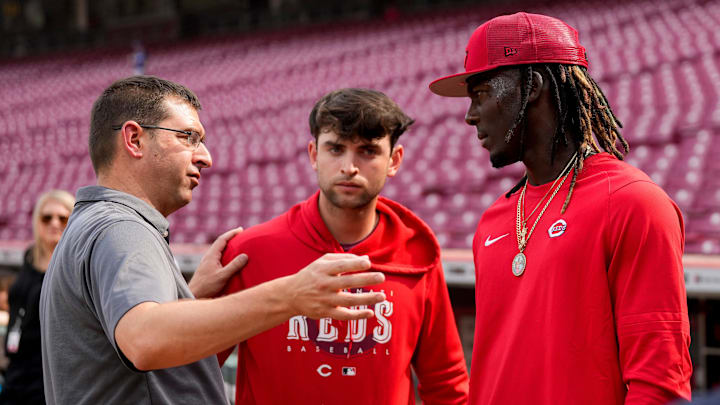If you’re a Milwaukee Brewers fan scanning the NL Central landscape, this offseason is already offering a pretty comfortable view. The Cincinnati Reds, fresh off a playoff appearance, have telegraphed a pragmatic winter: President of Baseball Operations Nick Krall says the payroll will sit “about the same” as last year, which functionally gives Cincinnati roughly $20 million to play with.
That’s not nothing. But it’s also not the kind of spending power that flips a division. It’s a smart, disciplined posture that mirrors how the Brewers typically operate, prioritizing value, fit, and runway over splash. And in a division where margins usually decide everything, Milwaukee should applaud the Reds’ savvy while also recognizing what it means competitively: the Central’s standard-bearer doesn’t appear to be staring down a rival super-team in 2026.
Reds’ tame payroll plan makes Brewers early NL Central favorites
The Reds opened 2025 with a payroll around $112 million and finished closer to $116–119 million, depending on whose accounting you prefer. Keeping things “about the same” strongly suggests a winter built from mid-tier adds, non-tenders that rebalance the ledger, and in-season flexibility, the very Brewer-ish playbook that chiseled Milwaukee into their third consecutive division title.
That approach is admirable for a club on the rise; it signals a front office committed to sustainability rather than a dopamine rush. But it also sets a ceiling. If the Reds are aiming for incremental upgrades rather than seismic ones, the onus shifts back to player development and internal breakouts to close the gap on Milwaukee’s stability.
To be clear, Cincinnati doesn’t need to swing a sledgehammer to be good. Krall has downplayed moving a starter, and you can see why: Hunter Greene, Brady Singer, Andrew Abbott, Nick Lodolo, and top prospect Chase Burns headline a rotation core most clubs would love to grow with.
Chase Petty and Rhett Lowder looming as options gives them more than a little upside on the runway. That’s the frame of a playoff-caliber staff. Where the Reds likely fall short of “fear factor,” though, is at the very top of the market. A major bat, Pete Alonso or Kyle Schwarber would be out of character and would eat all of that $20 million on its own.
Could they thread the needle with one splash and a bunch of league-minimum patches? Maybe. Is it the likeliest outcome? No.
From a Brewers vantage, that’s a welcome development. Milwaukee has succeeded by stacking 2–3 wins of value in multiple places, building a deep pitching staff, and avoiding contracts that age like milk. If Cincinnati is committed to the same disciplined path, the Central becomes a contest of organizational execution rather than checkbook theater. In that fight, the Brewers’ track record, especially at converting depth into wins, still travels. And while the Reds’ youth wave is real, “same payroll” probably means the Brewers won’t wake up to a headline that fundamentally changes the division’s math.
There’s also the Chicago factor. The Cubs appear to be loosening up payroll room, but read the tea leaves and it looks more like positioning and savings than a green light to spend heavily. If that posture holds, it nudges Milwaukee toward favored status by inertia alone. The calculus is simple: if no rival makes a significant roster impact, the team with the clearest identity and most consistent decision-making wins a lot of coin-flip games over 162. That’s been Milwaukee’s edge. Chicago trying to get leaner and Cincinnati choosing the careful path both point to a 2026 Central where the Brewers’ steady hand is, once again, the default pick.
Could the Reds still surprise? Absolutely. One aggressive swing at a middle-of-the-order bat or a creative trade for a multi-year cornerstone changes the tone. But even the optimistic read puts them in the “smart, dangerous, not terrifying” bucket. With a rotation pipeline that needs reps and a payroll target that caps fireworks, Cincinnati’s best-case scenario is probably a team that wins on cohesion and timing. That’s not a bad thing. It’s just not an immediate dethroning strategy against a club that’s made a habit of squeezing maximum value out of 1 through 40 on their roster.
Respect what the Reds are building and how they’re building it, it’s very much in Milwaukee’s image. But also breathe easy. Unless Cincinnati breaks character or Chicago pivots from saving to spending, the NL Central remains Milwaukee’s to lose.
